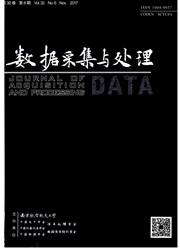

 中文摘要:
中文摘要:
在导波传播理论和频散波形预测理论的基础上,研究了超声导波在检测管道时,如何利用时域波形重构缺陷图像的问题。由于根据导波检测理论可以获得在任意时间管道表面任意位置的波形信息,而且管道上缺陷的存在直接影响导波信号的幅值,并被包含在回波信号中为传感器接收,所以通过对接收信号进行相应的处理便可预测缺陷处的波形用以成像。针对管道中的单通孔人工缺陷和轴向位置不同的双槽形人工缺陷,利用非轴对称端面加载的传感器激励L(0,2)模态导波进行检测,通过改变传感器周向位置获得一组检测信号以实现缺陷形状的成像。成像结果不仅能反映缺陷的类型,还能实现缺陷在轴向和周向的二维定位,对轴向双缺陷的定位取决于时间参数的选择。
 英文摘要:
英文摘要:
Based on the ultrasonic guided wave technique and the dispersive waveform prediction method, a method about how to image defects in pipes is presented. According to the guided wave technique, the displacement of guided wave propagation at an arbitrary time and point on the surface of a pipe is described. Defect in pipe always affects the amplitude of the guided wave signal, and the reflection signals including these affects can be received by a special transducer. In this paper, a non-axis symmetry end loading transducer is used to generate an L(0, 2) mode and receive its echo at one end of the pipe. By rotating this transducer through a specific space in the circumferential direction, twenty-four signals are received for imaging and locating defects. Experiment proves that it is effective to image and recognize defects in two kinds of pipes including a one-holed pipe and a two-partially-circumferential-notched pipe using the presented method.
 同期刊论文项目
同期刊论文项目
 同项目期刊论文
同项目期刊论文
 期刊信息
期刊信息
